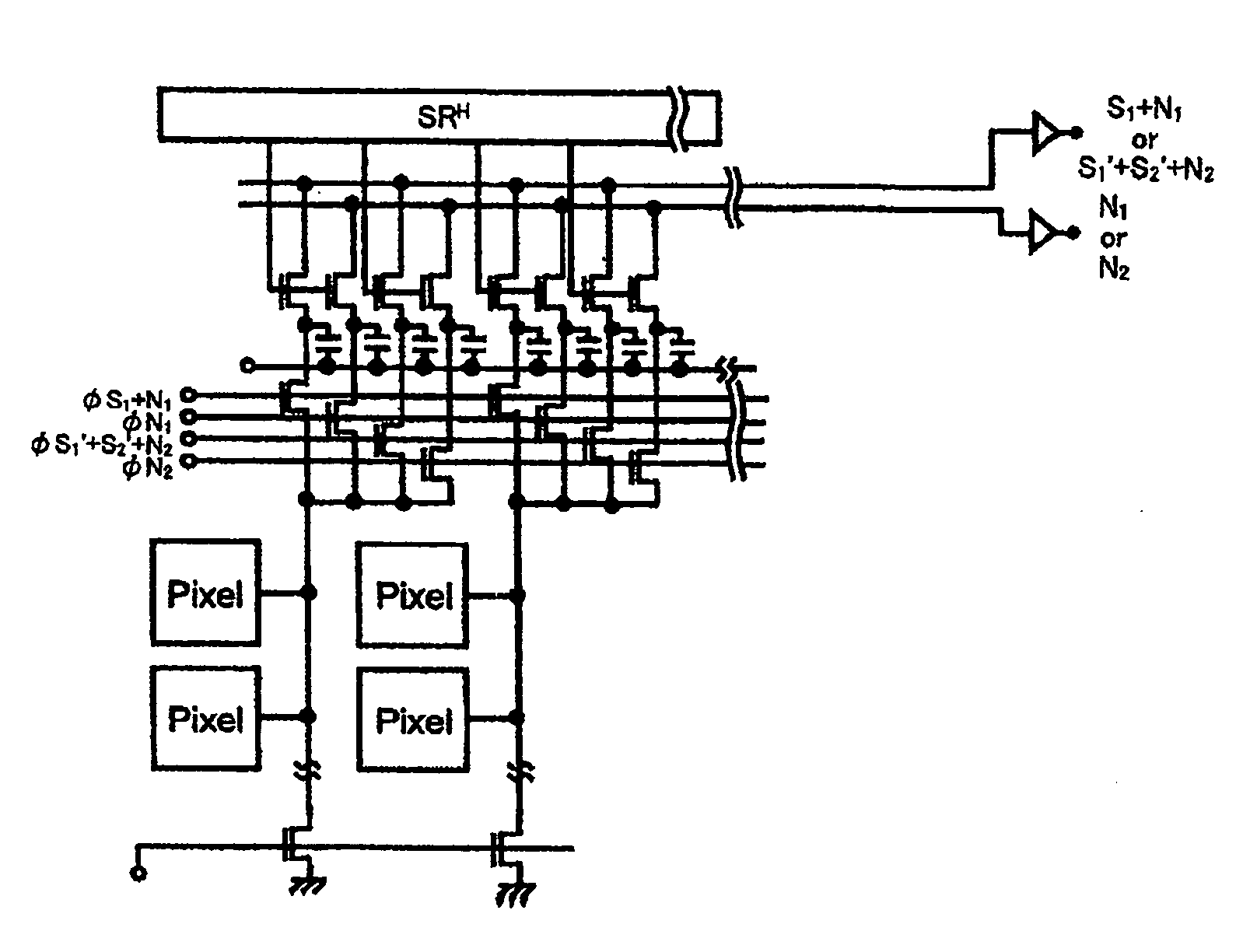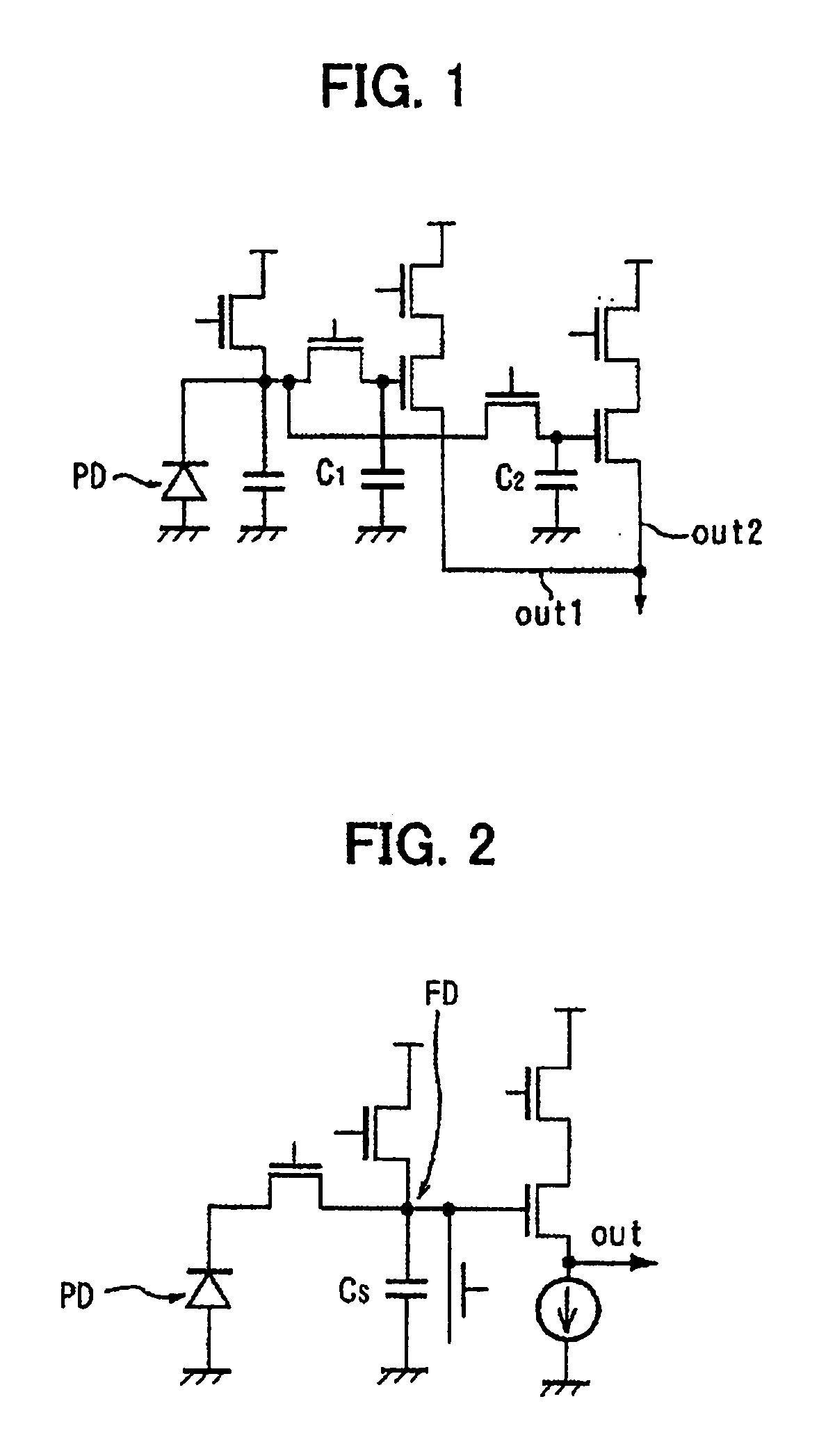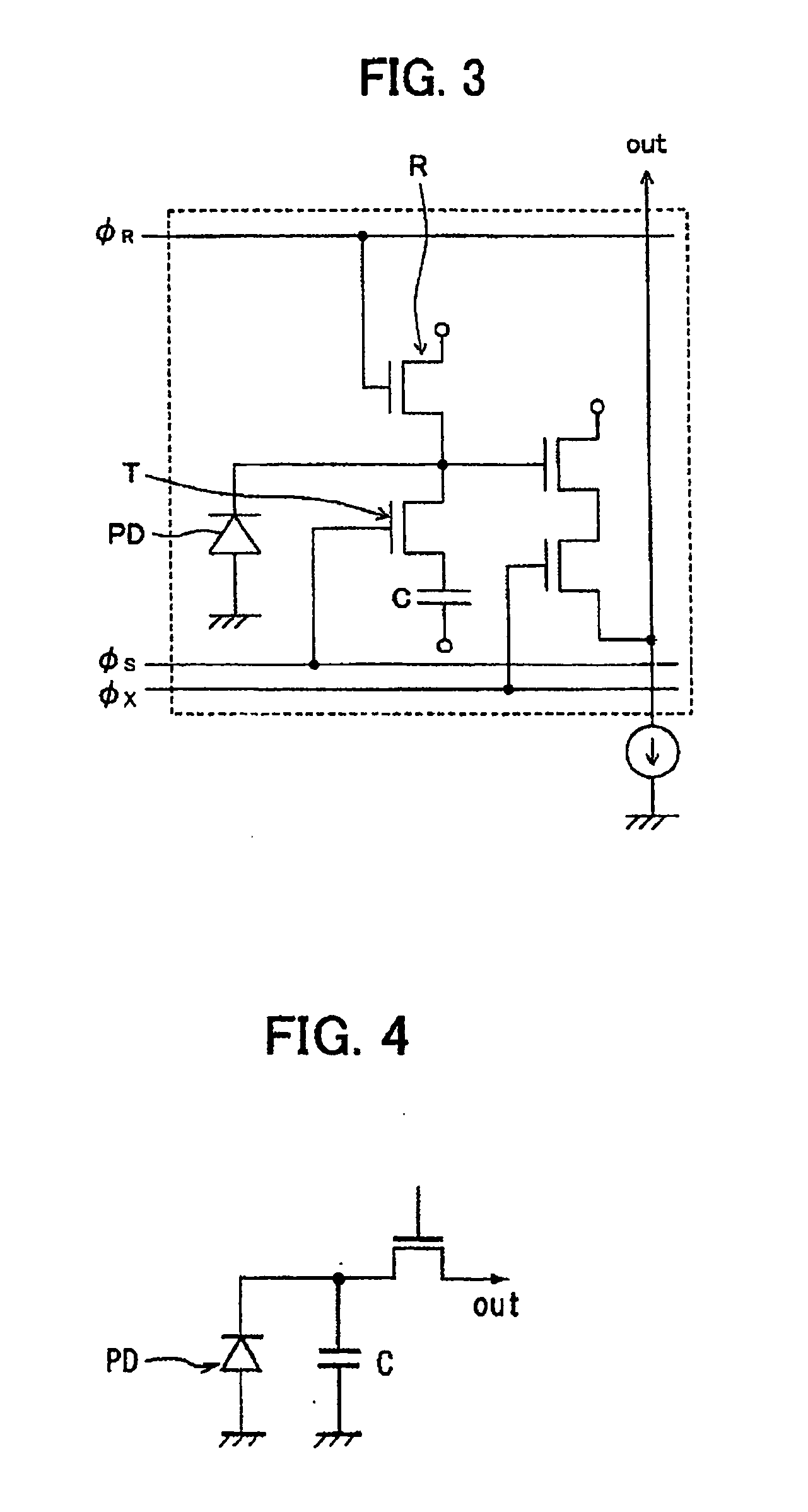Solid-State Imaging Device, Optical Sensor and Method of Operating Solid-State Imaging Device
a solid-state imaging and optical sensor technology, applied in the field of solid-state imaging devices, optical sensors and methods of operating solid-state imaging devices, can solve the problems of low sensitivity, degraded s/n ratio, difficulty in matching both images, etc., and achieve low illuminance, high s/n ratio, and high sensitivity
- Summary
- Abstract
- Description
- Claims
- Application Information
AI Technical Summary
Benefits of technology
Problems solved by technology
Method used
Image
Examples
first embodiment
[0154]A solid-state imaging device of the present embodiment is structured in the form of a CMOS image sensor and FIG. 6 is an equivalent circuit diagram for one pixel.
[0155]Each pixel includes a photodiode PD for receiving light and generating photoelectric charges, a transfer transistor Tr1 for transferring the photoelectric charges of the photodiode PD, a floating diffusion region FD from which the photoelectric charges are transferred via the transfer transistor Tr1, a storage capacitor element Cs for accumulating the photoelectric charges overflowing from the photodiode during accumulating operation, a storage transistor Tr2 for coupling or splitting potentials of the floating diffusion region FD and the storage capacitor element Cs, a reset transistor Tr3 coupled to the floating diffusion region FD for discharging the photoelectric charges of the floating diffusion region FD, an amplifier transistor Tr4 for amplifying the photoelectric charges of the floating diffusion region ...
second embodiment
[0234]A CMOS image sensor of the present embodiment is similar to the CMOS image sensor of the first embodiment but differs therefrom in a driving method.
[0235]FIG. 16 is a timing chart showing voltages applied to the drivelines (ΦT, ΦS, ΦR) each with two levels in on / off states. Like the first embodiment, ΦT may take three levels additionally including a level (+α).
[0236]First, at time T0 when a new filed begins, ΦR is set to be on under a status where ΦT is set to be off and ΦS is set to be on. This causes the photoelectric charges created in a preceding field to be discharged for resetting.
[0237]The accumulation time period TPD for CPD begins at a time point when ΦT is set to be off to allow CPD to start accumulating the photoelectric charges.
[0238]Next, at time T1 immediately after the resetting at time T0, ΦR is set to be off. At this moment, CFD and CS are brought into a coupled condition and a signal of CFD+CS at a reset level is read out as noise N2 for storage in the frame ...
third embodiment
[0271]In the CMOS image sensors of the first and second embodiments or the CMOS image sensor of the first embodiment having a pattern in which the storage-capacitor-element accumulation period TCS begins at time T0, the signal at the reset level of CFD+CS is read out as noise N2 and accumulated in the frame memory FM. This enables the canceling of noise appearing when sampling the signal of the sum (S1+S2) of the pre-saturated charge signal and the supersaturated charge signal. On the contrary, a CMOS image sensor of the present embodiment enables a reduction in cost of a chip without using the frame memory.
[0272]The frame memory is needed because the sampling timing of the signal (N2) at the reset level of CFD+CS precedes the sampling timing of the sum (S1′+S2′+N2) of the modulated pre-saturated charge signal and the supersaturated charge signal by one frame.
[0273]Here, the signal (N1) at the reset level of CFD+CS may be replaced by the signal (N1) at the reset level of CFD or the ...
PUM
 Login to View More
Login to View More Abstract
Description
Claims
Application Information
 Login to View More
Login to View More - R&D
- Intellectual Property
- Life Sciences
- Materials
- Tech Scout
- Unparalleled Data Quality
- Higher Quality Content
- 60% Fewer Hallucinations
Browse by: Latest US Patents, China's latest patents, Technical Efficacy Thesaurus, Application Domain, Technology Topic, Popular Technical Reports.
© 2025 PatSnap. All rights reserved.Legal|Privacy policy|Modern Slavery Act Transparency Statement|Sitemap|About US| Contact US: help@patsnap.com



